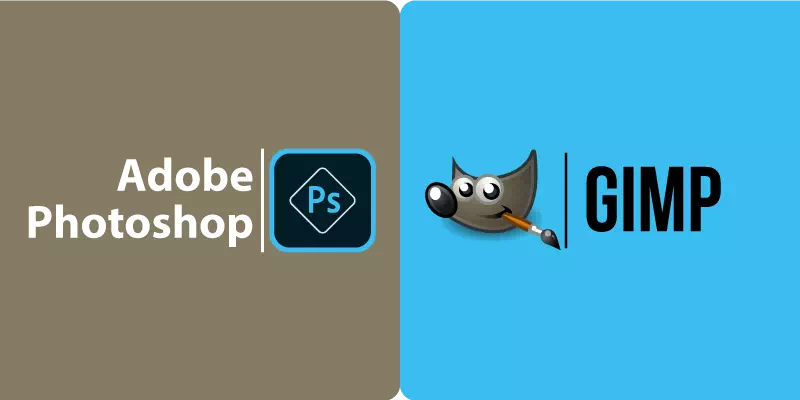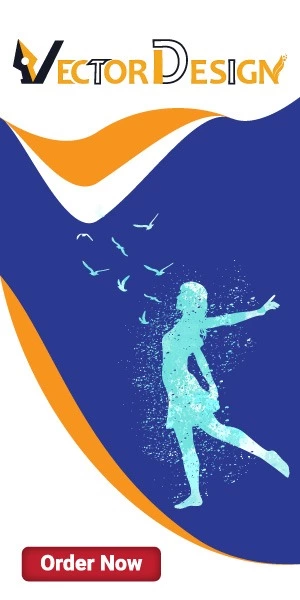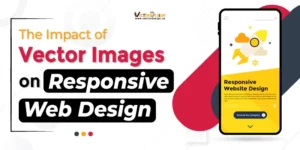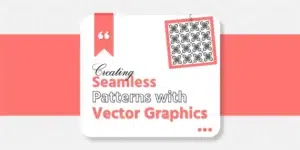Photoshop Vs GIMP! It’s been a long debating term for several years. Let’s find out the winner in different perspectives.
Among all the wonderful photo editor software, Photoshop and GIMP both are the most known. Photoshop does not need any introduction. Everybody knows the image editor. But, being relatively new software, GIMP is something extraordinary. Both are unique with their awesome editing features. Now you may ask which is better? And which is worth choosing for professional photo editing? Let’s star from the beginning!
Photoshop
Adobe Photoshop is a powerful photo editing and image retouching software application for graphic designers, web developers, photographers as well as hobbyist designers. Adobe. inc created the Photoshop app. It is compatible with both Windows and macOS. The designers use Photoshop for photo editing, image retouching, image manipulation, photo restoring, image masking, creative designing, and a lot more other services.
GIMP
GIMP stands for GNU Image Manipulation Program which is an open-source and free photo editing and retouching software. It is available for Linux, Windows, and macOS. Like Photoshop, it also provides photo editing services such as retouching images, restoring photos, photo clipping, masking, color correction, etc.
Comparison Chart of Photoshop and GIMP: At a Glance
Features are the items and facilities that any software provides for the users. Take a look at the features of Photoshop vs GIMP.

Photoshop Features-
- Neural filters
- Automatic sky replacement
- 3D design
- Mobile and web design tools
- Automatic storage on cloud
- Multi-shape and path selection tools
- Turns low-resolution images into a printable one
- Many special effects
- Multiple undo option
- Photo restoring
- Easy color correction
- Flaw repairing (dust, red-eye) is easy to do
- Pencil and pen tools
- Various fonts available
- Quick share option
- 360 panorama workflows
- Paste as plain text
GIMP Features-
- Customizable user interface
- Managing color efficiency
- Vector graphic features
- Photo quality enhancing
- Original artwork
- Tools for graphic designs
- Different hardware support like USB, MIDI controllers
- Converting images into different formats like PSG, JPEG, PNG, TIFF, and GIF.
- Noise reduction tools
- Customizable brush tools
- Background removal
- Automatic photo enhancement
- Inkscape
- Scribus
- Multiple plugins
Key Tools:
Here, have a look at what are the tools used in Photoshop and GIMP
Photoshop
- Retouching and painting tools:
- Brush tools
- Transformation tools
- Crop and slice tools
- Move and selection tools
- Measurement tools
- Type and drawing tools
- Navigation tools
- Clone stamp tool
- Pattern stamp tools
- Liquify tools
GIMP
- Selection tools
- Brush tools
- Transform tools
- Color tools
- Color picker tool
- Measurement tools
- Magnifying tools
Photoshop Vs GIMP: Basic Differences
Now let’s see the basic differences between Adobe Photoshop and GIMP
| Adobe Photoshop | GIMP |
| Photoshop is a heavyweight photo editing software that is close source and paid | GIMP is a lightweight photo editing software that is open source and free of cost |
| It requires approximately 1 GB from your hard disk | It does not take more than 25 MB from your hard disk |
| Photoshop may seem a bit hard for beginners | GIMP is easy to use for all users |
| Available on Windows and macOS | Available on Linux, Windows and macOS |
| Suitable for professional use | Suitable for general use |
| Photoshop is less flexible for beginners | GIMP is flexible and friendly |
| Can be used on Smartphone | Does not have a Smartphone version |
| Requires heavy-duty hardware facilities to run | Does not require any heavy-duty hardware facility to run |
| Batch processing is not very satisfactory | Does batch processing very skillfully |
| Updates are important as it brings many major changes | Updates are not so important, can be ignored |
| It is industry-standard software | Community centric software |
| Lots of in-built styles and freestyles; even customization is possible | Does not have many different styles |
| Does not support the native XCF file format of GIMP | It supports PSD files so opening and editing the Photoshop files is possible |
When to Choose Photoshop?
If you are a professional photo editor or graphic designer, Photoshop is the best option for you. As it contains numerous editing tools and advanced features, it serves the highest for bringing a professional touch to your works. You will never regret spending money on Photoshop. It even has a Smartphone version. So, choose it if budget is not an issue for you and you need professional standard features for editing and designing.
When to Choose GIMP?
If you are someone who likes to edit photos for personal purposes, then GIMP is the best match. It also has many advanced features but unlike Photoshop, they are not of high- quality. You can get to know many features but using them in professional work is not recommended. Not to forget, it is free software. Another thing to consider is- that GIMP is very light and does not take up a lot of space, so you can use it on your laptop. In a word, keep GIMP handy for quick editing and the sake of a hobby.
Specialties in Photoshop
- Photoshop offers RGB colors (Red, Green, and Blue) and CMYK (Cyan, Magenta, Yellow, and Key/Black).
- High-quality professional standard photo editing features are available.
- The company provides excellent customer support.
- You can learn using Photoshop from thousands of tutorials
- Easy photo transferring to Adobe Lightroom
- A mobile version is available
Specialties in GIMP
- Supports PSD files
- Supports multiple programming languages
- Provides a good amount of editing features free of cost
- Provides full-screen preview option of having a final check
- Dorset effect (picture within a picture) available
- Best for batch processing
Pros & Cons
Pros of Photoshop
- Turns ordinary images into a professional ones
- Many editing tools and features
- Supports high-quality graphic design
- can create passport size and stamp size photos
- Numerous ready to use templates
- Greeting cards, birthday cards can be made
- Photo retouching is easier and professional-quality
- mobile version available
- Can create social media-friendly photos with the advanced photo editing tools
Cons of Photoshop
- Not beginner-friendly
- Requires high-quality hardware
- Not free of cost even expensive
- Does not support vector graphics
- Only an experienced one can take full advantage of Photoshop
- Takes a lot of space to run
Pros of GIMP
- GIMP is free and open-source software
- Does not take much space
- Does not require heavy-duty hardware
- User friendly
- Contains a lot of advanced features
- Photoshop files are supported
- Available on Linux
Cons of GIMP
- Does not have a mobile version
- It is not suitable for professional photo editing
- It has limited 3rd party plugins
- Not good for multiple layer image editing
GIMP and Photoshop Pricing
As we have said earlier, Photoshop is not free. You can choose different packs according to your requirement. For single-use, it costs $20.99 per month. You can buy a yearly pack that costs $289.88 per year. You need to repurchase it every year. Without paying for it, you will lose your access to the software.
On the other hand, GIMP is entirely free of cost. You can just download and use it throughout the time. To upgrade, you also do not require money.
Photoshop vs GIMP: To Wrap Up
There is no wonder that Photoshop wins over GIMP for its special features and advanced tools. But it is the only thing to consider? Certainly, not. As everyone’s requirement is different, it is not wise to tag something as “best”. If you need professional-quality features and advanced tools, choose Photoshop. If you don’t mind spending money on high-quality editing tools, go for Photoshop.
GIMP also has many special features and advanced tools for photo editing. As it is lightweight and comes free, it is worth choosing for small business runners or personal purposes.
Some Important FAQs
Let’s have a look at some of the most searched queries along with their best possible answers regarding the fact Photoshop vs GIMP.
Is GIMP just as good as Photoshop?
GIMP is a powerful free and open-source image editing software that can perform many of the same functions as Adobe Photoshop, such as layering, photo retouching, and color correction. However, Photoshop offers more advanced features and a more refined user interface, making it the preferred choice for professional graphic designers and photographers.
Do professionals use GIMP?
While GIMP is a powerful and versatile image editing software, it is not as widely used by professionals in the graphic design and photography industries as Adobe Photoshop. This is partly because Photoshop offers a more comprehensive set of features and tools that are specifically designed for professional workflows. Additionally, many businesses and clients require designers and photographers to work with Photoshop files, which may not be compatible with GIMP.
Can GIMP replace Photoshop?
While GIMP can perform many of the same functions as Adobe Photoshop, it may not be a complete replacement for all users. Especially for professional designers and photographers who require advanced features and support for Photoshop file formats. However, Photoshop offers a more refined user interface, advanced features such as 3D modeling, advanced typography, and seamless integration with other Adobe products like Illustrator and InDesign. As a result, it makes Photoshop the preferred choice for many professional designers and photographers.
What can Photoshop do that GIMP cant?
Adobe Photoshop offers advanced features for typography, including the ability to create and edit vector-based text, apply text effects, and control kerning and leading. Also, it provides seamless integration with other Adobe products, making it easier for users to work across multiple programs.
In addition, Photoshop offers support for a wide range of file formats, including RAW, which is commonly used by professional photographers. These features and capabilities make Photoshop the preferred choice for many professional designers and photographers who require a complete and powerful image editing solution.










